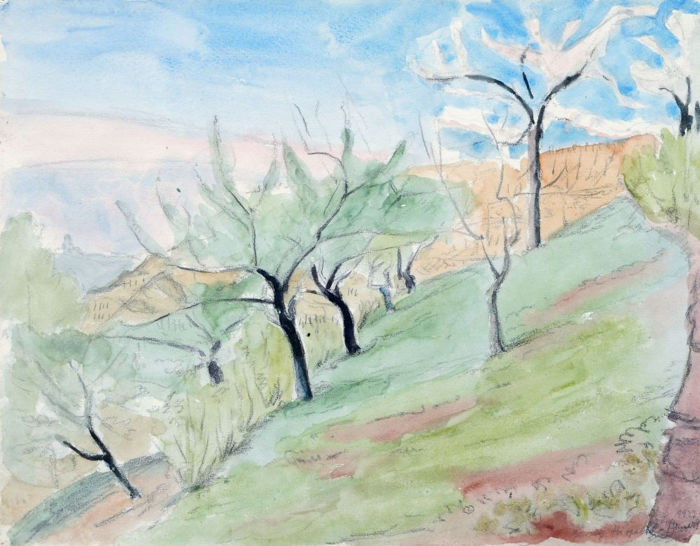guss

Karl Gussow or Carl Gussow was a German realist painter of the 19th century.
Gussow began his painting studies at the Saxon Art School in Weimar and traveled to Italy. He later worked with the Belgian painter-historian Ferdinand Pauwels, who greatly influenced his style.
Gussow was active as a genre and portrait painter. Over time, his work became characterized by an almost photographic realism, which was not only admired but also criticized, as it was a completely new direction.
Karl Gussow lived in Karlsruhe and Berlin, where he maintained a private ladies' studio, later founding another private painting school. He obtained a position at the Karlsruhe Academy of Fine Arts, also worked at the Prussian Academy of Fine Arts and taught at the Munich Academy of Fine Arts.


Karl Gussow or Carl Gussow was a German realist painter of the 19th century.
Gussow began his painting studies at the Saxon Art School in Weimar and traveled to Italy. He later worked with the Belgian painter-historian Ferdinand Pauwels, who greatly influenced his style.
Gussow was active as a genre and portrait painter. Over time, his work became characterized by an almost photographic realism, which was not only admired but also criticized, as it was a completely new direction.
Karl Gussow lived in Karlsruhe and Berlin, where he maintained a private ladies' studio, later founding another private painting school. He obtained a position at the Karlsruhe Academy of Fine Arts, also worked at the Prussian Academy of Fine Arts and taught at the Munich Academy of Fine Arts.


Karl Gussow or Carl Gussow was a German realist painter of the 19th century.
Gussow began his painting studies at the Saxon Art School in Weimar and traveled to Italy. He later worked with the Belgian painter-historian Ferdinand Pauwels, who greatly influenced his style.
Gussow was active as a genre and portrait painter. Over time, his work became characterized by an almost photographic realism, which was not only admired but also criticized, as it was a completely new direction.
Karl Gussow lived in Karlsruhe and Berlin, where he maintained a private ladies' studio, later founding another private painting school. He obtained a position at the Karlsruhe Academy of Fine Arts, also worked at the Prussian Academy of Fine Arts and taught at the Munich Academy of Fine Arts.


Karl Gussow or Carl Gussow was a German realist painter of the 19th century.
Gussow began his painting studies at the Saxon Art School in Weimar and traveled to Italy. He later worked with the Belgian painter-historian Ferdinand Pauwels, who greatly influenced his style.
Gussow was active as a genre and portrait painter. Over time, his work became characterized by an almost photographic realism, which was not only admired but also criticized, as it was a completely new direction.
Karl Gussow lived in Karlsruhe and Berlin, where he maintained a private ladies' studio, later founding another private painting school. He obtained a position at the Karlsruhe Academy of Fine Arts, also worked at the Prussian Academy of Fine Arts and taught at the Munich Academy of Fine Arts.


Karl Gussow or Carl Gussow was a German realist painter of the 19th century.
Gussow began his painting studies at the Saxon Art School in Weimar and traveled to Italy. He later worked with the Belgian painter-historian Ferdinand Pauwels, who greatly influenced his style.
Gussow was active as a genre and portrait painter. Over time, his work became characterized by an almost photographic realism, which was not only admired but also criticized, as it was a completely new direction.
Karl Gussow lived in Karlsruhe and Berlin, where he maintained a private ladies' studio, later founding another private painting school. He obtained a position at the Karlsruhe Academy of Fine Arts, also worked at the Prussian Academy of Fine Arts and taught at the Munich Academy of Fine Arts.


Gussy Erika Edith Hippold-Ahnert, née Ahnert, was a German painter and master student of Otto Dix. The early work of the Dix student, such as the painting Lying Nude from 1931, shows her closeness to Dix's New Objectivity or Verism. She reached her artistic peak in 1932/1933, when she developed a painting style of her own, unmistakable character in the glazing technique taught by Dix. Hippold-Ahnert's late work is closely connected to the works of her husband Erhard Hippold and other artists of this region and time.




Emile Antoine Bourdelle was an influential and prolific French sculptor and teacher. He was a student of Auguste Rodin, a teacher of Giacometti and Henri Matisse, and an important figure in the Art Deco movement and the transition from the Beaux-Arts style to modern sculpture.
His studio became the Musée Bourdelle, an art museum dedicated to his work.













































































